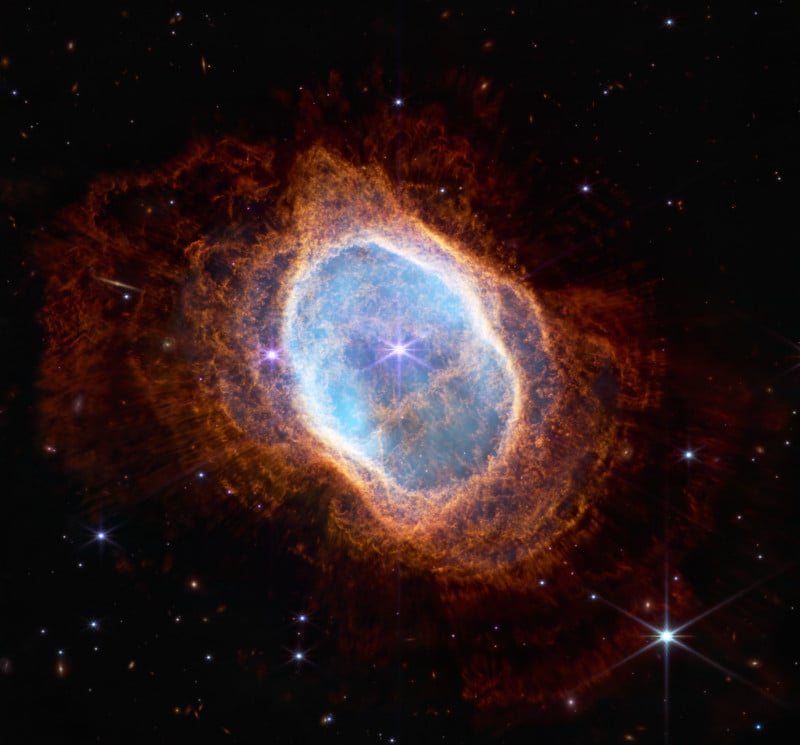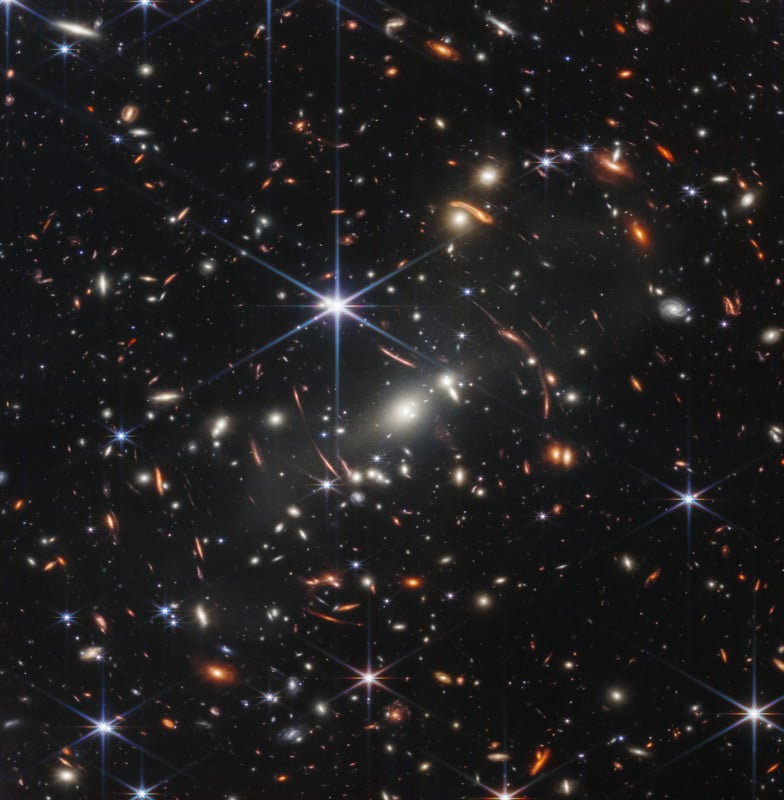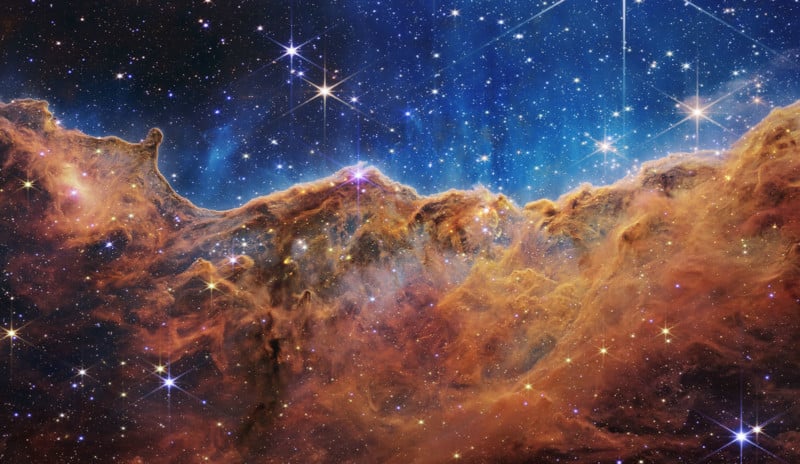
The James Webb Space Telescope (JWST) blasted off into space on December 25, 2021. Since then readers have been treated to a series of stunning images of the cosmos.
A year has passed since JWST, which cost $10 billion, was launched from Guiana Space Center on Christmas Day.
The amazing telescope will spend the next decade gravitationally balanced between the Sun and Earth exploring the universe in infrared.
From the Pillars of Creation to Neptune’s rings, PetaPixel looks back at its best images so far.
Southern Ring Nebula

The Southern Ring Nebula, also known as the “Eight-Burst” nebula, is what is known as a planetary nebula: an expanding cloud of gas, surrounding a dying star. It is nearly half a light-year in diameter and is located about 2,000 light-years from Earth.
Webb has captured two separate views of the Southern Ring Nebula, both in mid-infrared and near-infrared.
Pillars of Creation
![]()
The Pillars of Creation is a celestial region that gives birth to new stars. This 122-megapixel photo was captured by Webb’s Near-Infrared Camera and is a close-up view of a subset of the Eagle Nebula, which lies 6,500 light-years away from Earth.
Cartwheel Galaxy
![]()
This photo of the Cartwheel Galaxy is a composite image created from its Near-Infrared Camera and Mid-Infrared Instrument.
The Cartwheel Galaxy was formed as the result of a high-speed collision that occurred about 400 million years ago. It is made up of two rings: a bright inner ring and a colorful outer ring, both of which expand outward from the center of the shockwave in what the Webb team describes looks like a shockwave.
Neptune’s Rings
![]()
The JWST captured the clearest view of Neptune’s planet rings in more than 30 years. Some of the rings had not been detected since NASA’s Voyager 2 flew by in 1989.
![]()
JWST also captured seven of Neptune’s 14 known moons: Galatea, Naiad, Thalassa, Despina, Proteus, Larissa, and Triton. Neptune’s large and unusual moon, Triton, dominates this Webb portrait of Neptune as a very bright point of light sporting the signature diffraction spikes seen in many of Webb’s images.
SMACS 0723

President Joe Biden unveiled the first image from the JWST, a galaxy cluster called SMACS 0723 as it appeared 4.6 billion years ago.
Webb’s Near-Infrared Camera brought distant galaxies into sharp focus. Tiny, faint structures that have never-been-seen-before, including star clusters and diffuse features. The image has enabled researchers to learn more about the galaxies’ masses, ages, histories, and compositions.
Carina Nebula

The Carina Nebula is one of the largest and brightest nebulae that is visible in the night sky. It is located about 7,600 light-years away from Earth. The Carina Nebula is home to many massive stars, several times larger than the Sun.
“What looks much like craggy mountains on a moonlit evening is actually the edge of a nearby, young, star-forming region NGC 3324 in the Carina Nebula. Captured in infrared light by the Near-Infrared Camera on NASA’s James Webb Space Telescope, this image reveals previously obscured areas of star birth,” NASA says.
Tarantula Nebula
![]()
This huge 122.5 megapixel photo of the Tarantula Nebula includes tens of thousands of never-before-seen young stars that were not visible with previous telescopes.
The image was captured with the JWST’s Near-Infrared Camera and shows a massive star-forming region of space, captured as a mosaic of multiple photos and combined into a huge 122.5-megapixel photo (14,557 by 8,418 pixels). The most active region of star formation can be seen in the center of the photo, where the bright blue stars are most condensed.







